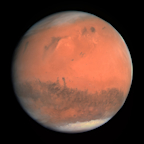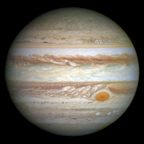Search results
World News. Exclusive. CHOP GEAR. Grand Tour star forced to axe his own show after he became too successful. News TV. TRAVEL SAFE. Warning to Brits flying next month as Jet2 reveals major...
SUN Behavioral Columbus is a 144-bed psychiatric hospital located on the north side of Columbus. The hospital provides a full continuum of specialized care, including inpatient and day hospital services, for those suffering from mental health illness and substance use disorders.
The Sun is the star at the center of the Solar System. It is a massive, nearly perfect sphere of hot plasma, [18] [19] heated to incandescence by nuclear fusion reactions in its core, radiating the energy from its surface mainly as visible light and infrared radiation with 10% at ultraviolet energies.
- Overview
- Characteristics of the sun
- Solar wind and flares
- GeneratedCaptionsTabForHeroSec
Learn more about the life-giving star at the center of our solar system.
Compared with the billions of other stars in the universe, the sun is unremarkable. But for Earth and the other planets that revolve around it, the sun is a powerful center of attention. It holds the solar system together; provides life-giving light, heat, and energy to Earth; and generates space weather.
The sun resides some 26,000 light-years from the Milky Way's center, in a tendril of our home galaxy known as the Orion Arm. Every 230 million years, the sun—and the solar system it carries with it—makes one orbit around the Milky Way's center. Though we can't feel it, the sun traces its orbit at an average velocity of 450,000 miles an hour.
The sun formed more than 4.5 billion years ago, when a cloud of dust and gas called a nebula collapsed under its own gravity. As it did, the cloud spun and flattened into a disk, with our sun forming at its center. The disk's outskirts later accreted into our solar system, including Earth and the other planets. Scientists have even managed to see these planet-birthing disks around our sun's distant young cousins.
4:45
Sun 101
Our home star is a yellow dwarf, a medium-size variety that's fairly common in our galaxy. The label “yellow” is misleading, though, since our sun burns a bright white. On Earth, the sun can take on warmer hues, especially at sunrise or sunset, because our planet's atmosphere scatters blue and green light the most.
From our perspective, “dwarf” might not be the best word for our sun, either. At about 864,000 miles (1.4 million kilometers) wide, the sun is 109 times wider than Earth, and it accounts for more than 99.8 percent of the solar system's total mass. If it was a hollow ball, more than a million Earths could fit inside it. But the sun isn't hollow: It's filled with scorching gases and soups of electrically charged particles called plasma. The sun's surface temperature is about 10,000 degrees Fahrenheit (5,500 degrees Celsius), and it's 27 million degrees Fahrenheit (15.5 million Celsius) at the core.
In addition to light, the sun radiates heat and a steady stream of charged particles known as the solar wind. The wind blows about 280 miles (450 kilometers) a second throughout the solar system, extending the sun's magnetic field out more than 10 billion miles. Beyond that distance, the solar wind gives way to the colder, dense material that drifts in between stars, forming a boundary called the heliopause. So far, just two spacecraft—Voyager 1 and Voyager 2—have crossed this cosmic threshold, which defines the start of interstellar space.
Every so often, a patch of particles will burst from the sun in a solar flare, which can disrupt satellite communications and knock out power on Earth. Flares usually stem from the activity of sunspots, cool regions of the photosphere that form and dissipate as the sun's internal magnetic field shifts. Solar flares and sunspots obey a regular cycle, rising and falling in number every 11 years as the poles of the sun's magnetic field flip back and forth.
Sometimes, the sun will also launch huge bubbles of magnetized particles from its corona, in events called coronal mass ejections (CMEs). Some CMEs can grow as large as the sun itself and fling as much as a billion tons of material in a given direction. As they rush from the sun, CMEs can send huge shockwaves through the solar wind. If a CME collided with Earth, its particles could pack enough power to fry electronics in orbit and on Earth's surface.
Like many energy sources, the sun will not last forever. It has already used up nearly half of the hydrogen in its core. The sun will continue to burn through the hydrogen for another five billion years or so, and then helium will become its primary fuel. At that point, the sun will expand to about a hundred times its current size, swallowing Mercury and Venus—and maybe Earth. It will burn as a red giant star for another billion years and then collapse into a white dwarf star.
SOURCES
NASA Science - Our Sun
Learn about the sun's characteristics, life cycle, and effects on Earth and the solar system. Find out how the sun produces energy, light, heat, and space weather, and what will happen when it dies.
- Composition. The sun is made up of a blazing combination of gases. These gases are actually in the form of plasma. Plasma is a state of matter similar to gas, but with most of the particles ionized.
- Electromagnetic Radiation. The sun’s energy travels to Earth at the speed of light in the form of electromagnetic radiation (EMR). The electromagnetic spectrumexists as waves of different frequencies and wavelengths.
- Evolution of the Sun. The sun, although it has sustained all life on our planet, will not shine forever. The sun has already existed for about 4.5 billion years.
- Sun’s Structure. The sun is made up of six layers: core, radiative zone, convective zone, photosphere, chromosphere, and corona. Core. The sun’s core, more than a thousand times the size of Earth and more than 10 times denserthan lead, is a huge furnace.
Learn about the Sun, the star at the center of our solar system, its size, temperature, structure, and history. Find out how the Sun affects Earth and other planets, and how we study it with spacecraft and telescopes.
People also ask
Why is the sun so important?
Is the Sun a dynamic star?
How big is the Sun?
Is the Sun a star?
The Sun Digital Newspaper. The Newspaper, as printed, on your phone, tablet or computer. INCLUDES AUTOMATIC ACCESS TO SUN SUPERDAYS, HOLS FROM £9.50 & SUN RAFFLE. Get every page of The Sun as...



















